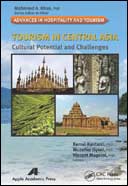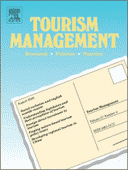This book will be a major resource for all academic researchers and practitioners interested in issues dealing with the development of tourism, its potential and challenges, and policy and regulatory issues in the Central Asian countries of Kazakhstan, Uzbekistan, Turkmenistan, Kyrgyzstan, and Tajikistan. These countries are gaining more attention as emerging destinations. There is very limited research that focuses on these countries with respect to their potential and characteristics as tourism destinations. This book aims to be an invaluable source for both practitioners and academicians who are in international marketing and tourism.
The Central Asia region as an emerging destination is ripe for future tourism development. The region is rich with historical, cultural, and natural beauty that could provide significant utility to many potential visitors. This book brings together key writings on this topic in a single resource.
This book:
- explores tourism potential and competitiveness of tourism industry in Central Asia in general;
- provides information on cultural tourism development with its challenges and identifies obstacles for tourism development in Central Asia;
- sheds light on perceptions of foreign investors on the tourism market in Central Asia;
- brings the region as a destination to the forefront of tourism academic research and development.


